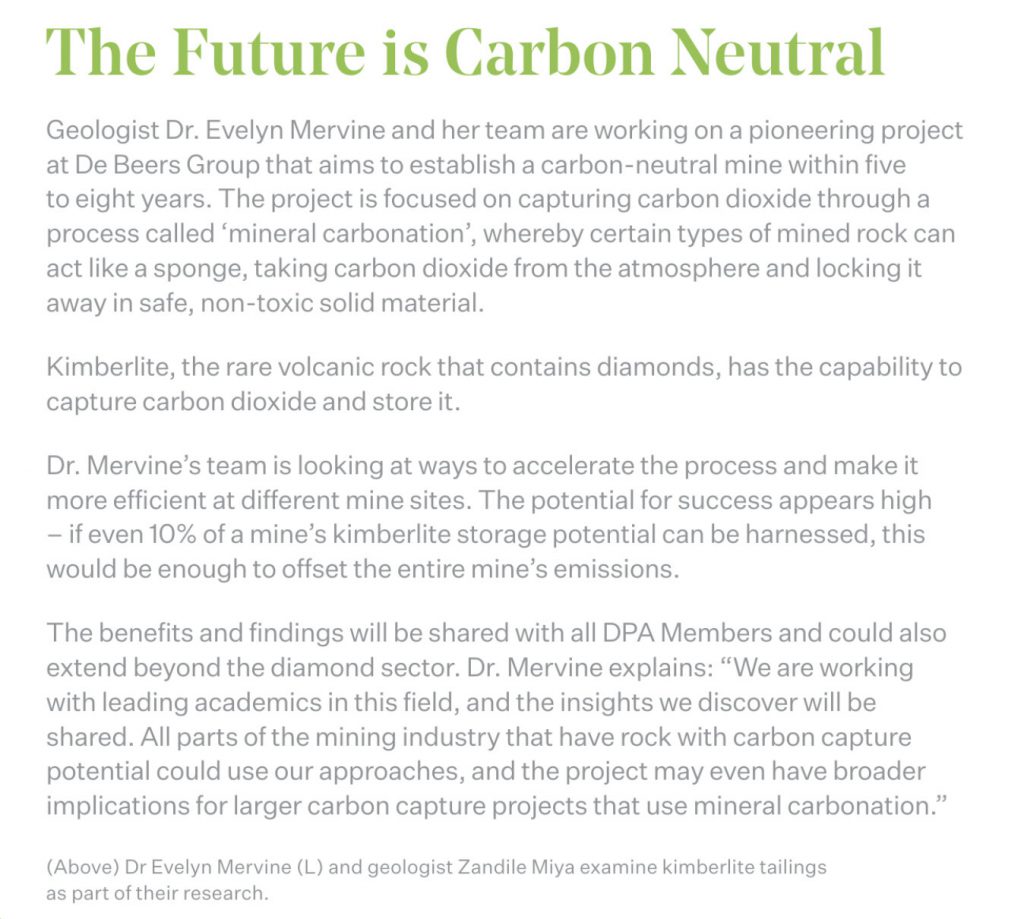The Reality of Modern Diamond Mining
By examining the world’s seven leading diamond producers, Total Clarity shines a light on the global impact of modern diamond mining on mining workforces, local communities and on our planet.
Total Clarity Report
Right from the Start
As early as the approval phase of a new mine, future closure plans are agreed upon with local governments and neighboring communities, ensuring that the interests of all stakeholders are considered. When the Ekati mine in Canada’s Northwest Territories closes (image at top of page), the excavated areas will be flooded, leaving a perfectly safe habitat able to support healthy new life in the water and on land.
All the rock that is moved during operations will be left on site and re-claimed as part of the natural landscape.
Climate Action and Reducing Carbon Footprint
Diamond mining and diamond recovery are almost entirely reliant on mechanical processes and do not require the use of large quantities of chemicals. They do, however, require significant quantities of energy.
The amount of carbon dioxide equivalents (CO2e) emitted by DPA Members is driven by the use of fossil fuels in the generation and use of electricity (58%) and in running vehicles, equipment and other machinery (42%).
According to the Trucost report, DPA Members collectively emitted 160kg of CO2e per polished carat produced. This equivalent to the amount of CO2e generated by driving 390 miles in an average passenger vehicle.
All members are working actively on programs or initiatives aimed at reducing their energy use and carbon footprint.
Become an ArcticMark Distributor



